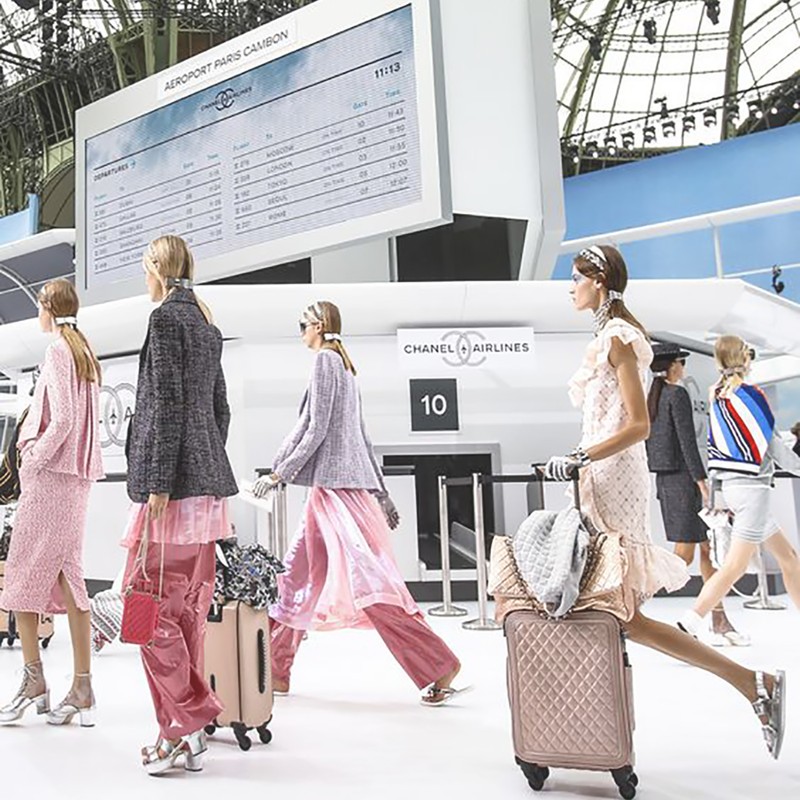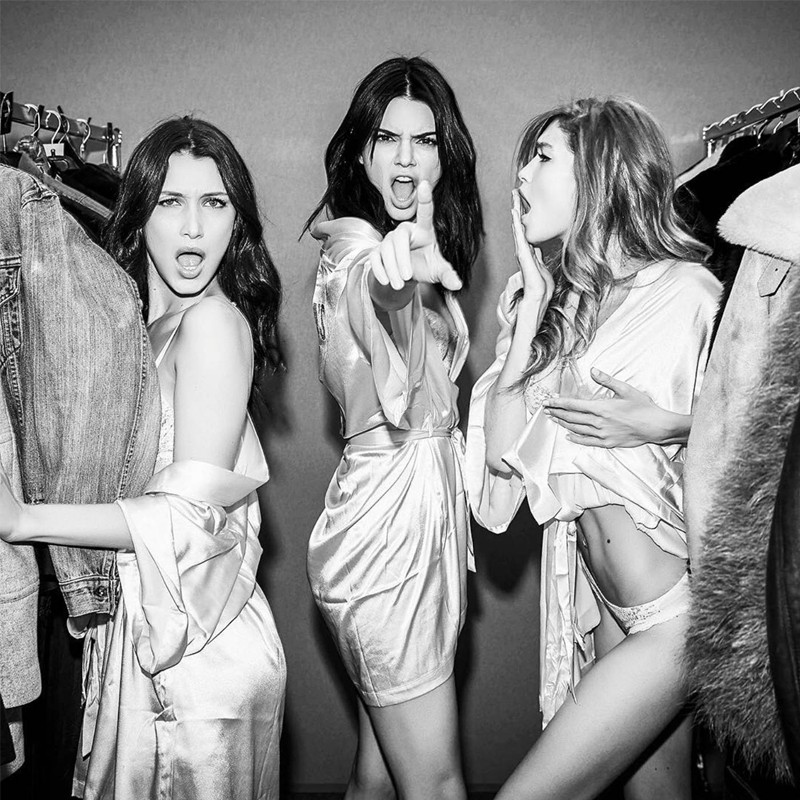Is The Runway Still Relevant?
YES, It’s As Relevant As Ever
Charlotte Collins, Fashion Editor
Devil Wears Prada fans will always remember the belt scene. Anne Hathaway, as naive magazine assistant Andy, sniggering at the fashionistas debating the difference between two almost-identical colours, only to be given a dressing-down by Meryl Streep’s Miranda Priestly. Fixating on Andy’s blue knit, Miranda describes Oscar de la Renta’s cerulean gowns, Yves Saint Laurent’s subsequent military jackets, plus the eight designers who copied the shade before it finally trickled “down into some tragic corner where you no doubt fished it out of some clearance bin”. Ouch. Cinematic license, maybe, but the fictional editor’s assessment her industry nailed it – the runway is top of the fashion food chain.
Whether it’s side striped pants or pointed white boots, all the trends we buy on the high street are borrowed and adapted from what’s sent down the runway. Fashion week is an opportunity for industry insiders to set the agenda for the forthcoming season, and, in 2018, technology is making the runway even more relevant. Pre-Instagram, YouTube and online publishing, fashion week was a a closed shop; a B2B exercise for editors and buyers alone. But social media has democratised the traditional show – allowing anyone with internet access to see exactly what’s influencing the clothes they’ll be wearing next season.
So is the traditional fashion show format still relevant? Perhaps not. From Topshop Unique’s live- streamed shows to Burberry’s straight to Net-a-Porter, shoppable collections, savvy brands are developing their shows to reflect the ways we now shop and consume media. The relevance of fashion week programming is also under debate; globalisation has made the shows’ seasonality less relevant, whilst the gendered segmentation of fashion feels increasingly outdated and conservative.
More forward-thinking brands have modernised the presentation of their collections – Tom Ford cut down his four yearly runways to two, whilst Calvin Klein, Vetements and Bottega Venetta have merged their male and female shows. For any naysayers claiming the industry is outdated, this clearly shows the fashion world is setting the status quo for modern businesses adapting to accommodate evolving social norms.
Granted, designers could showcase their collections without the pomp and prestige of the catwalk, but fashion is supposed to be glamorous, inspiring, aspirational. Whether it’s the pure theatre of the Chanel space rocket or subversive floating heads at Gucci, the catwalk is the highest expression of designers’ art and creativity – plus killer Instagram fodder for those not privileged enough to be on the front row. Drama, fun and all the inspiration the high street needs to dress us… What’s not to love?
NO, Things Have Moved On
Rosy Cherrington, Features Editor
Just as the internet has changed the way we pay our bills and watch the latest films, it’s had a huge impact on the fashion industry. While we were once only exposed to new styles twice a year, today designers drop new styles into stores on a daily basis – and, in short, we’re so used to getting an instant hit (be it shoes, Netflix, or Tinder) that anything else feels outright outdated.
When it comes to runway shows, instantly published images and livestreams give consumers access to new designs in real time – except we can’t actually buy the clothes until six months later. By the time they’ve hit stores, fast fashion brands have already ripped them off and they’re pretty much old news. Yes, the see-now buy-now model has met great success, but the only brands able to financially pull it off are the Burberrys and Tommy Hilfigers of the world. What about the smaller designers?
According to American Vogue, even a no-frills show averages at just under half a million dollars – and it’s a format that “makes very little sense now”, according to former UK editor Alexandra Shulman. Yes, runway shows are the ultimate expression of a designer’s vision – before it’s filtered through the eyes of the media – but there are alternatives to the catwalk, and ones that allow emerging creatives to shine just as brightly as the big names.
Informal presentations featuring everything from static models to a film, pop-up shops and Instagram feeds instead of live shows – so many designers are bringing renewed energy to an industry that even ‘the bible’ agrees is falling behind. And these new ways to present collections are not only working for shoppers, they’re saving designers and editors from fashion week burnout, and putting people of all backgrounds and budgets on a more level playing field.
Then there’s the street style argument – there’s often more coverage of what the influencers and editors are wearing to fashion week shows than the shows themselves. Street style is becoming increasingly avant-garde; designers dress their FROWS in new season styles, yet it somehow seems more accessible than the catwalk (although the question of where exactly these street style stars would be photographed if not for fashion week is yet to be answered).
Personally, I’m with Susanne Tide-Frater (Brand and Strategy Director for Farfetch and a consultant at Victoria Beckham) – who coined the term “fashion fatigue”. There is too much stuff – an endless conveyer belt of new clothes six times a year – and not enough meaning; perhaps ditching the runway would help bring some back.
Inspiration Credits: Vogue.co.uk
DISCLAIMER: We endeavour to always credit the correct original source of every image we use. If you think a credit may be incorrect, please contact us at info@sheerluxe.com.



